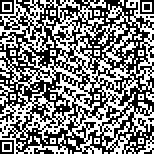鲁银山,王杰,胡婷,胡艳,郭铁成,张秀娟,张松.胫神经-M1区成对关联刺激对缺血性脑卒中大鼠前肢功能障碍恢复的影响及其机制研究[J].中华物理医学与康复杂志,2018,40(11):801-808
扫码阅读全文

|
| 胫神经-M1区成对关联刺激对缺血性脑卒中大鼠前肢功能障碍恢复的影响及其机制研究 |
|
| |
| DOI: |
| 中文关键词: 脑卒中 成对关联刺激 静息运动阈值 γ-氨基丁酸 |
| 英文关键词: Cerebral ischemic stroke Paired associative stimulation Resting motor threshold GABA |
| 基金项目:国家自然科学基金面上项目(81272156) |
|
| 摘要点击次数: 6098 |
| 全文下载次数: 7244 |
| 中文摘要: |
| 目的 观察胫神经-M1区成对关联刺激(PAS)对缺血性脑卒中大鼠前肢功能障碍的影响,并从大脑和脊髓两个水平探讨其作用机制。 方法 随机选取8只健康雄性SD大鼠,分别于PAS干预前5 min、干预后5、30和60 min行左侧桡侧腕伸肌(ECR)静息运动阈值(RMT)测定。将48只健康雄性SD大鼠随机分为假手术组(n=16)和模型组(n=32)。模型组采用线栓栓塞右侧大脑中动脉(MCAO)制作缺血性脑卒中动物模型,假手术组除不插入线栓外手术操作与模型组相同。模型组模型制作成功后,随机分为MCAO组(n=16)和PAS治疗组(n=16)。PAS治疗组术后第1天开始PAS治疗,连续7 d,PAS作用部位为左侧胫神经-患侧M1区。于术后第1天和第7天进行转角实验和左侧前肢抓力测定。术后第7天,测定各组大鼠左侧ECR的RMT,用磁共振波谱法检测颈膨大左侧区域神经代谢情况,用Western Blot法检测颈膨大左右两侧区域Bcl-2、Bax的蛋白表达。 结果 健康SD大鼠接受PAS干预后5、30和60 min时,左侧ECR的RMT均较干预前降低,差异有统计学意义(P<0.05)。术后第1天,MCAO组和PAS治疗组的转角实验评分均较假手术组增高,左侧前肢抓力均较假手术组明显减小,差异均有统计学意义(P<0.01)。PAS治疗7 d后,PAS治疗组的转角实验评分较MCAO组降低,左侧前肢抓力较MCAO组增加,左侧ECR的RMT较MCAO组降低,差异均有统计学意义(P<0.05或P<0.01)。与假手术组比较,MCAO组颈膨大左侧区GABA含量减少(P<0.05),PAS治疗组GABA含量与MCAO组无统计学差异(P>0.05),3组间其他代谢物的比较,差异均无统计学意义(P>0.05)。3组间颈膨大左右两侧区域Bcl-2、Bax的含量比较,差异均无统计学意义(P>0.05)。 结论 胫神经-M1区成对关联刺激可增加大鼠前肢运动皮质代表区的神经元膜兴奋性,并改善缺血性脑卒中大鼠前肢的功能障碍。 |
| 英文摘要: |
| Objective To explore the effects and the underlying mechanisms by which paired associative stimulation (PAS) of tibial nerve electrostimulation and M1 cortex transcranial magnetic stimulation (TMS) in promoting the recovery of forelimb dysfunction in rats with cerebral ischemic stroke. Methods Resting motor thresholds of left extensor carpi radialis muscle (ECR) were determined 5 min before and 5 min, 30 min, 60 min after PAS,respectively, in 8 male Sprague-Dawley (SD) rats. Then 48 male SD rats were divided into a sham group (n=16) subject to sham surgery, an experimental group (n=32) which was further divided into a MCAO group (n=16) and a PAS group (n=16) after cerebral ischemic stroke model was established successfully by occluding the right middle cerebral artery. 24 hours after surgery, PAS consisting of left tibial nerve stimulation and right M1 cortex area TMS was applied to PAS group once daily for 7 consecutive days. The corner tests and grip strength tests were performed before and after 7 days of PAS treatment in each group. The RMTs of left ECR were determined, metabolites of the left area tissue of cervical spinal cord were measured by nuclear magnetic resonance spectrum, and expressions of Bcl-2 and Bax of left and right area tissue of cervical spinal cord enlargement were detected by Western Blot technique after 7 days of intervention. Results The average RMTs of left ECR at 5 min, 30 min, 60 min after PAS were significantly lower than those at 5 min before PAS (P<0.05). All rats in experimental group showed significant higher turning scores and lower grip strength when compared with sham group (P<0.001 or P<0.01). After PAS intervention, PAS group demonstrated lower turning scores, higher grip strength and lower RMT of left ECR as compared with MCAO group (P<0.05 or P<0.01). The expression of GABA of left cervical enlargment was significantly decreased in MCAO group when compared with the sham group (P<0.05), and there was no significant difference between MCAO group and PAS group. Meanwhile, other metabolites showed no significant difference among the three groups. The average expression level of Bcl-2 and Bax proteins in both sides of cervical spinal cord enlargment showed no significant difference among three groups either. Conclusions Tibial nerve-M1 cortex area PAS may increase the excitability of motor cortical representation of forelimbs in rats, by which PAS promotes the recovery of forelimb dysfunction in rats with cerebral ischemic stroke. |
|
查看全文
查看/发表评论 下载PDF阅读器 |
| 关闭 |